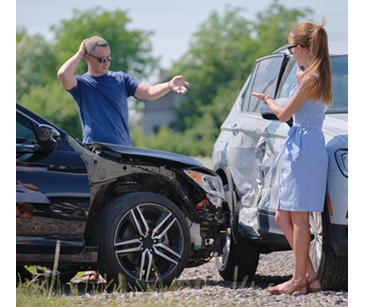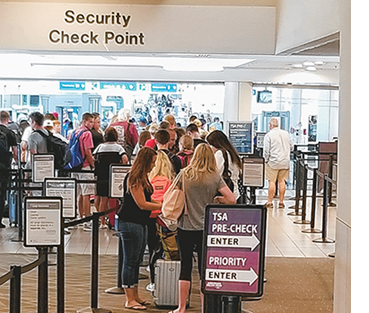Mastering Defensive Driving: A Roadmap to Safety
 The open road offers freedom, convenience, and the thrill of exploration. However, it also comes with inherent risks, as car accidents continue to be a significant public health concern in the United States. Defensive driving is not just a skill; it's a responsibility that can save lives. In this blog post, we will delve into the alarming statistics of car accidents in the U.S., exploring the various factors contributing to injuries and fatalities across different age groups. Moreover, we will provide a comprehensive guide to defensive driving, equipping you with the knowledge and skills to navigate the roads safely.
The open road offers freedom, convenience, and the thrill of exploration. However, it also comes with inherent risks, as car accidents continue to be a significant public health concern in the United States. Defensive driving is not just a skill; it's a responsibility that can save lives. In this blog post, we will delve into the alarming statistics of car accidents in the U.S., exploring the various factors contributing to injuries and fatalities across different age groups. Moreover, we will provide a comprehensive guide to defensive driving, equipping you with the knowledge and skills to navigate the roads safely.
The Alarming Reality of Car Accidents
Car accidents are a prevalent and unfortunate reality, causing significant injuries and fatalities every year in the United States. According to the National Highway Traffic Safety Administration (NHTSA), in 2020 alone, there were an estimated 38,824 fatalities resulting from motor vehicle crashes. This number is a stark reminder of the urgent need for enhanced road safety measures and individual responsibility.
Injuries and Fatalities Across Different Age Groups
Car accidents do not discriminate based on age, affecting individuals across various demographics. Analyzing the data provides insights into the distribution of injuries and fatalities among different age groups.
-
Teenagers and Young Adults:
Young drivers, particularly those between the ages of 16 and 24, face a higher risk of car accidents. According to the Insurance Institute for Highway Safety (IIHS), in 2019, the highest rate of motor vehicle crash deaths occurred among 20-24-year-olds, followed closely by 16-19-year-olds. Inexperience, impulsivity, and distractions contribute to the vulnerability of this age group on the road.
-
Middle-Aged Adults:
The risk of fatal accidents tends to decrease in the middle-aged population, peaking in the teenage and early adult years. However, complacency can set in, and individuals may become overconfident in their driving abilities. It is crucial for this age group to remain vigilant and committed to safe driving practices.
-
Older Adults:
As individuals age, physical limitations and health issues may impact their ability to drive safely. According to the NHTSA, in 2019, adults aged 65 and older accounted for 18% of all traffic fatalities. Vision impairment, slower reaction times, and medical conditions contribute to the challenges faced by older drivers. Encouraging open conversations about driving safety and exploring alternative transportation options becomes essential for this demographic.
Defensive Driving: A Comprehensive Approach
Defensive driving is a proactive approach that involves anticipating potential hazards, making informed decisions, and taking actions to avoid accidents. By adopting a defensive driving mindset, motorists can significantly reduce the risk of being involved in collisions. Here are key principles to master:
-
Stay Attentive and Minimize Distractions:
Distractions, such as texting, talking on the phone, or fiddling with the radio, significantly increase the risk of accidents. A study by the AAA Foundation for Traffic Safety found that taking your eyes off the road for just two seconds doubles the chances of being involved in a crash. Defensive drivers remain focused on the task at hand – driving – and minimize distractions to ensure optimal attention to the road.
-
Obey Traffic Laws:
Traffic laws exist to regulate the flow of vehicles and protect road users. Defensive driving begins with strict adherence to speed limits, traffic signals, and other regulations. By obeying these laws, drivers contribute to a safer and more predictable driving environment.
-
Maintain a Safe Following Distance:
Tailgating is a common contributor to rear-end collisions. Defensive drivers maintain a safe following distance, allowing for adequate reaction time in case of sudden stops or emergencies. The "three-second rule" – keeping at least three seconds of distance from the vehicle in front – is a simple guideline to follow.
-
Be Prepared for the Unexpected:
Defensive drivers anticipate potential hazards and are prepared for the unexpected. This includes scanning the road ahead, checking blind spots, and being aware of the actions of surrounding vehicles. Being proactive rather than reactive is a fundamental principle of defensive driving.
-
Adjust to Road and Weather Conditions:
Adverse weather conditions and challenging road surfaces require adjustments to driving behavior. Defensive drivers reduce speed, increase following distances, and use headlights in inclement weather. Understanding how road and weather conditions can impact driving safety is crucial for preventing accidents.
-
Avoid Aggressive Driving:
Aggressive driving behaviors, such as speeding, tailgating, and road rage, contribute to a hostile driving environment and increase the risk of accidents. Defensive drivers prioritize patience, courtesy, and maintaining a calm demeanor on the road.
-
Regular Vehicle Maintenance:
A well-maintained vehicle is essential for safe driving. Regularly check and maintain brakes, tires, lights, and other critical components to ensure optimal performance. Addressing maintenance issues promptly contributes to overall road safety.
-
Continuous Education and Training:
Defensive driving is a skill that can be honed through continuous education and training. Consider taking defensive driving courses to enhance your knowledge and skills. These courses cover topics such as risk awareness, emergency maneuvers, and effective decision-making on the road.
Conclusion
In the United States, the statistics surrounding car accidents are a sobering reminder of the importance of defensive driving. By understanding the risks associated with different age groups and adopting a proactive approach to road safety, motorists can contribute to a significant reduction in injuries and fatalities.
Defensive driving is not merely a set of rules but a mindset that prioritizes safety and responsible behavior on the road. By staying attentive, obeying traffic laws, maintaining safe distances, and being prepared for the unexpected, drivers can navigate the roads with confidence and reduce the likelihood of accidents.
As we continue to strive for safer roads, it is crucial for individuals, communities, and policymakers to collaborate in promoting and enforcing defensive driving principles. Through collective efforts, we can create a road environment where everyone can enjoy the freedom of driving without compromising on safety.




























